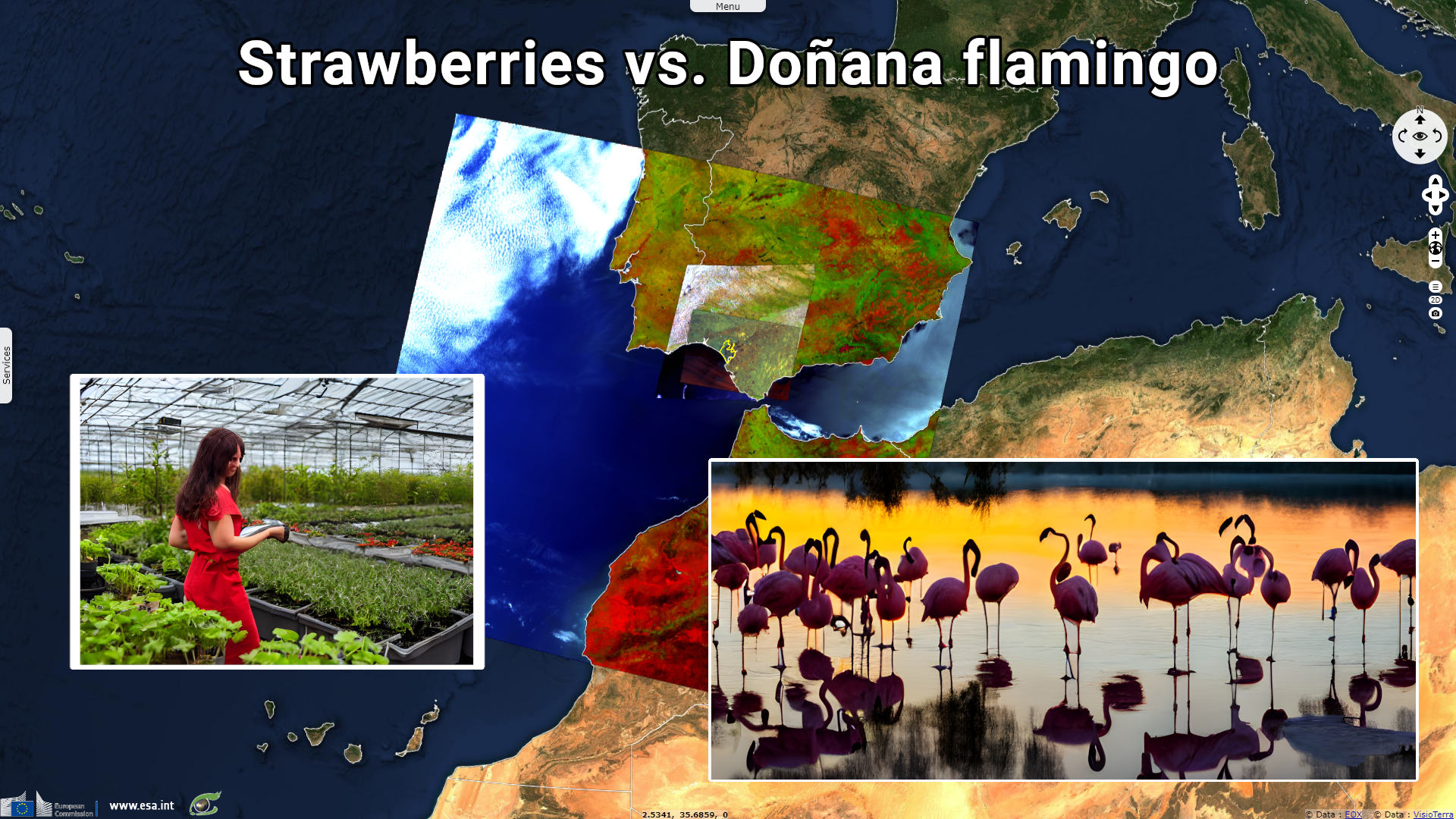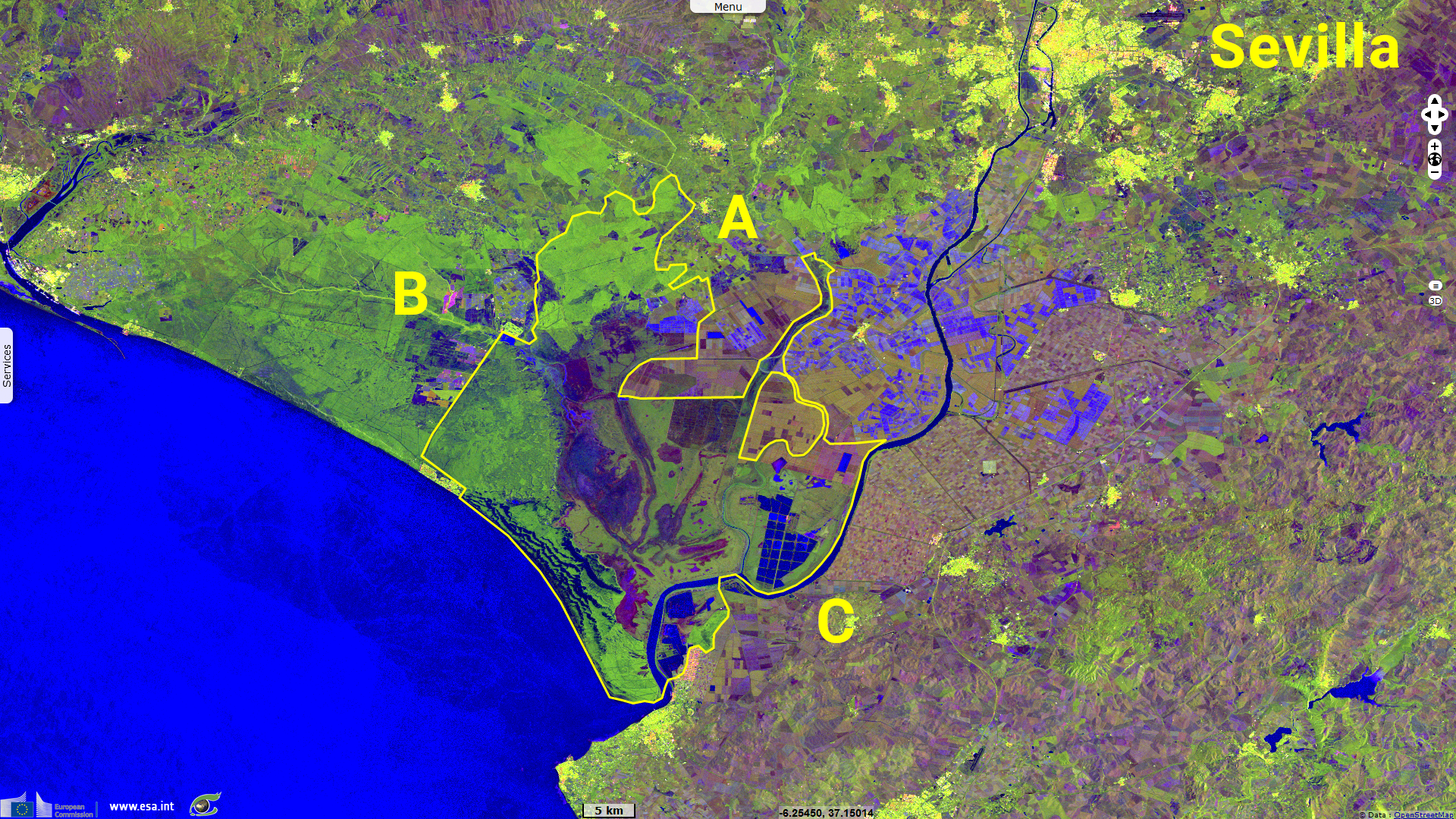Strawberries vs Doñana flamingo, Spain
Sentinel-1 CSAR IW acquired from 11 July 2021 to 24 June 2022 at 06:27:27 UTC (30 products)
Sentinel-3 OLCI FR acquired on 09 May 2022 at 10:42:27 UTC
Sentinel-2 MSI acquired on 25 June 2022 at 11:06:31 UTC
Sentinel-3 OLCI FR acquired on 09 May 2022 at 10:42:27 UTC
Sentinel-2 MSI acquired on 25 June 2022 at 11:06:31 UTC
Keyword(s): Agriculture, droughness, Ramsar site, wetland, biodiversity, Doñana, Spain
The two previous images present the statistics calculated on each of the two polarizations over long periods from July 2021 to June 2022. This time series has 30 products. The irrigated plots show strong backscatter variations (right images). This is also the case for the Veta La Palma fish farm, particularly in VH polarization.
This colour composite highlights the wetlands and the most irrigated plots. In contrast, urban areas have constant backscatter throughout the year and appear yellow. The areas in red (average in VV) correspond more to bare soils while the green colour reveals more unirrigated or poorly irrigated vegetation as well as forests, orchards or scrubland.
In the Sentinel-2 optical image, water reservoirs can be identified (in blue). These reservoirs as well as the heavily irrigated plots are well rendered by the standard deviation of the VH polarization. Whether in optics or radar, the different plots are clearly identifiable.










The Doñana National Park, located in the province of Huelva in Spain covers nearly 100,000 hectares. Listed as a UNESCO World Heritage Site and as a Ramsar site (wetland zone), the park is home to several thousand animal and plant species on 100,000 hectares of lagoons, marshes and forests. Doñana is particularly known for being home to flamingos.
Doñana National Park (source image)
The water deficit is 85% due to illegal withdrawals from farms representing more than 1,560 football pitches. These irregularities have been the subject of several complaints from the European Commission. A bill to increase irrigation rights in the region was recently championed by the right-wing Partido Popular, governing Andalusia, with the support of the far-right Vox party.
Many environmental organizations are protesting against this bill. WWF obtained the support of supermarket chains to oppose the project (see the notice "The main European supermarkets ask President Juan Manuel Moreno Bonilla to abandon the plan to legalize illegal irrigation in Doñana").